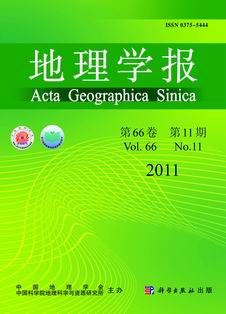HE Fanneng, LI Shicheng, ZHANG Xuezhen
To simulate land cover change process and its climate effects, it is significant to construct historical land use and land cover change dataset with spatial information. According to "Cropland Taxes" and "the Number of Households" data recorded in historical documents, this paper speculates cropland area and population of each Lu (administrative region of the Northern Song Dynasty) during the mid-Northern Song Dynasty by analyzing some society factors of the Northern Song Dynasty, including land-use practices, taxation system, reclamation policies. Besides, this study selects slope, altitude and population density as the main driving factors of land use suitability degree and reconstructs the gridding spatial distribution pattern of cropland of the Northern Song Dynasty (at a 60 km×60 km resolution). The results are shown as follows. (1) The cropland area of the whole country in the mid- and late Northern Song Dynasty is about 720 million Mu, accounted for 40.1% of the north and 59.9% of the south; the population is 87.2 million, accounting for 38.7% of the north and 61.3% of the south; the territory cropland fraction is 16.6%, and per capita cropland area is 8.2 Mu. (2) The cropland fraction of the North China Plain, the Yangtze River Plain, the Guanzhong Plain, the plains of Hunan and Hubei, and the Sichuan Basin are larger while the that of the south of Nanling Ridges, Southwest China (except the Chengdu Plain) and southeast coastal regions of China are lower. (3) In terms of altitudes, we conclude that the cropland areas of low altitude, middle altitude, high altitude are 443 million Mu, 215 million Mu, and 64 million Mu respectively, and the corresponding mean cropland fraction are 27.5%, 12.6% and 7.2%. (4) As for slopes, we conclude that the cropland area of flat slope, slow slope, slope, steep slope are 116 million Mu, 456 million Mu, 144 million Mu and 2 million Mu respectively, and the corresponding mean cropland fraction are 34.6%, 20.7%, 8.5% and 2.3%.
